Ocean to ocean: a fly-drive through Maritime Canada
Discover a new side of this vast nation with a tour of three of its lesser known provinces
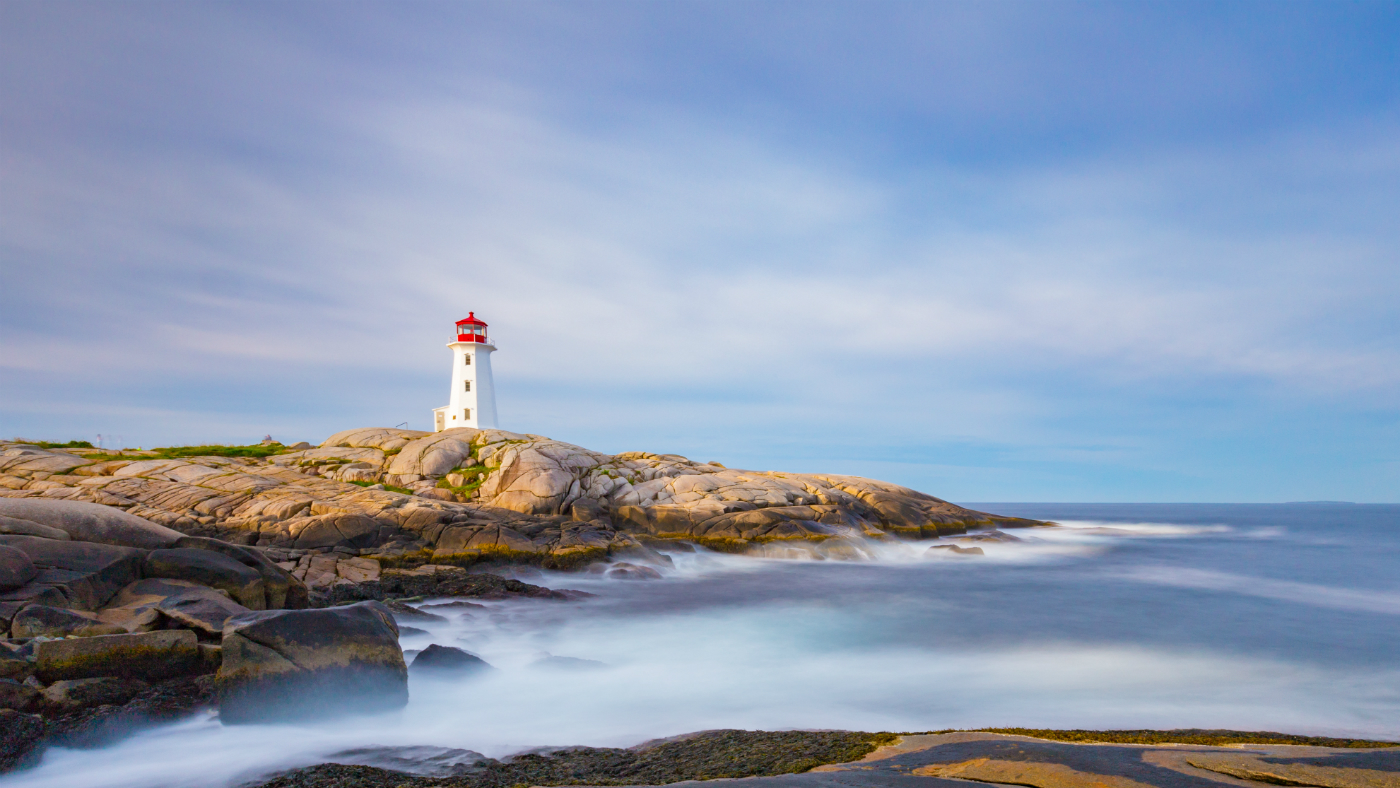
When you think of Canada, the images that come to mind are probably of grizzly bears prowling through pine forests, skiers swooping down snow-capped peaks, or maybe deer dotted across desolate prairies.
But those stereotypes are challenged by a visit to the Maritimes - a little-visited region of eastern Canada huddled against the US border and flanked by vast expanses of the North Atlantic.
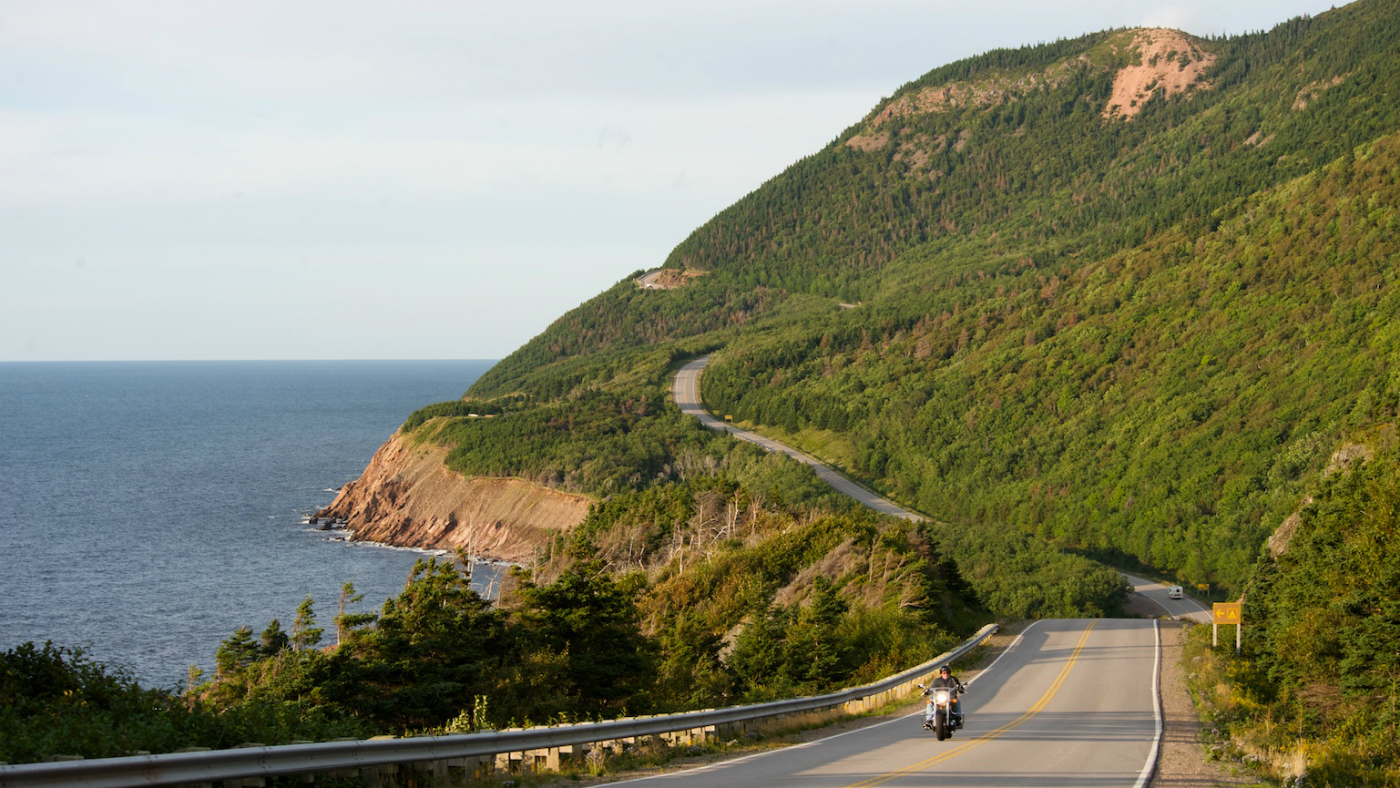
Comprising the provinces of Nova Scotia, New Brunswick and Prince Edward Island, the region offers an alternative vision of Canada that is defined by the inhabitants’ British roots, and an industry and identity carved out by generations of fishermen and seafarers.
The Week
Escape your echo chamber. Get the facts behind the news, plus analysis from multiple perspectives.

Sign up for The Week's Free Newsletters
From our morning news briefing to a weekly Good News Newsletter, get the best of The Week delivered directly to your inbox.
From our morning news briefing to a weekly Good News Newsletter, get the best of The Week delivered directly to your inbox.
As summer drew to a close and the warm splendour of the Canadian autumn kicked in, we hopped on a plane, readied our road maps and took a trip across these great provinces to find out just what they have to offer.
Nova Scotia
Halifax
Only six hours after taking off from a rainy London Heathrow on an Air Canada flight, we broke through the clouds and touched down in the cultural and economic hub of the Maritimes - Halifax, Nova Scotia.
Set in a small natural inlet on the eastern coast of the province, this city of just under 500,000 people is the main gateway to Atlantic Canada, and offers a comprehensive taste of the quirks that make the Maritimes so special.
A free daily email with the biggest news stories of the day – and the best features from TheWeek.com
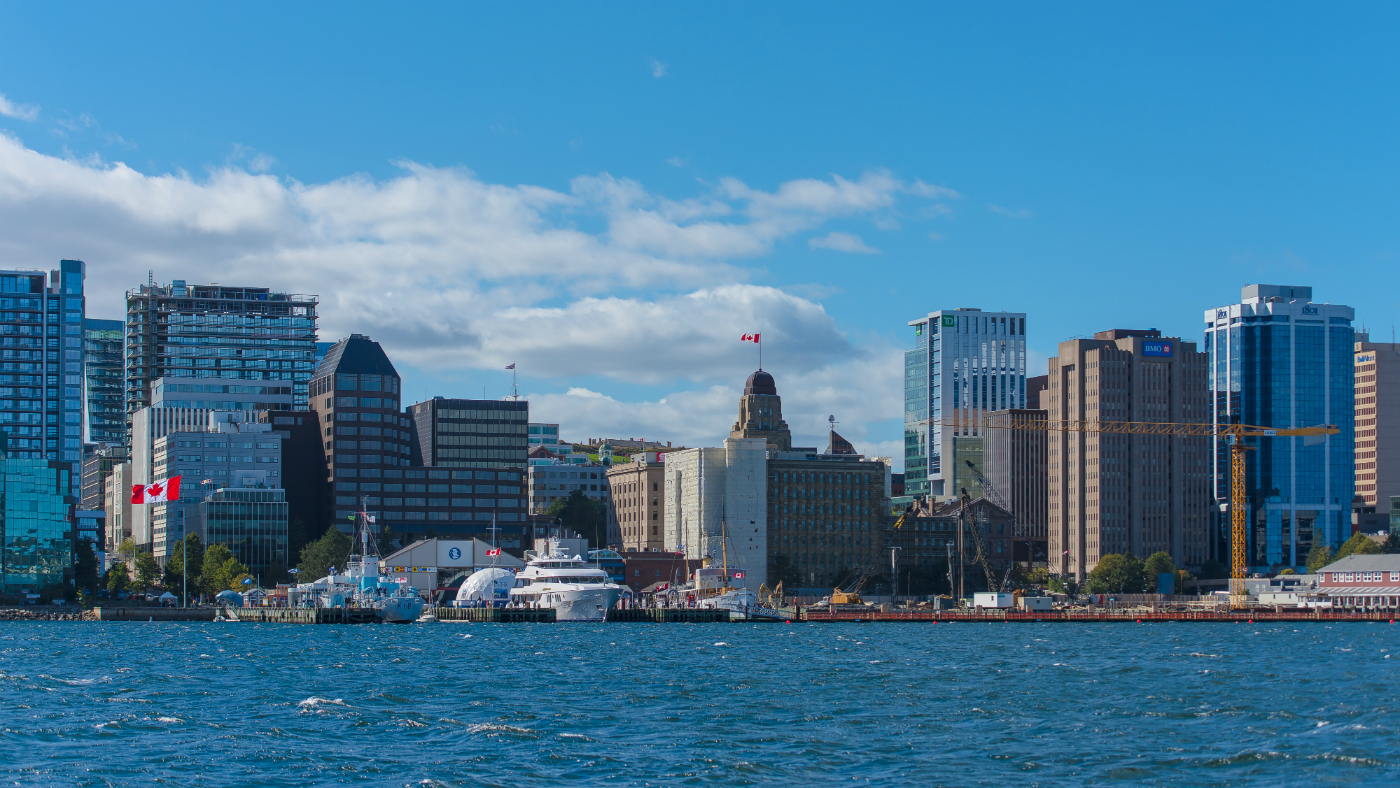
Halifax’s rich history dates back to 1746, when the British government sponsored the first ever settlement plan in North America through Halifax Harbour. Within three years a vast citadel had been constructed on the site of the modern-day city, the imposing star-shaped fort of which still stands today.
For a fascinating, if sobering, insight into the city’s seafaring past, head to the Maritime Museum of the Atlantic on the bustling waterfront. Halifax Port was the launching point for most salvage missions following the sinking of the Titanic in 1912 - as well as the site of the largest non-nuclear man-made explosion, in 1917, when a cargo ship carrying explosives headed for France for use in the First World War collided with another vessel.
Along with its, sometimes tragic, maritime history, Halifax has gained renown as a university town, drawing youth from across the Maritimes. Their presence can be felt in the wealth of hipster coffee shops and music venues dotted across Halifax, which lend a cosmopolitan atmosphere.
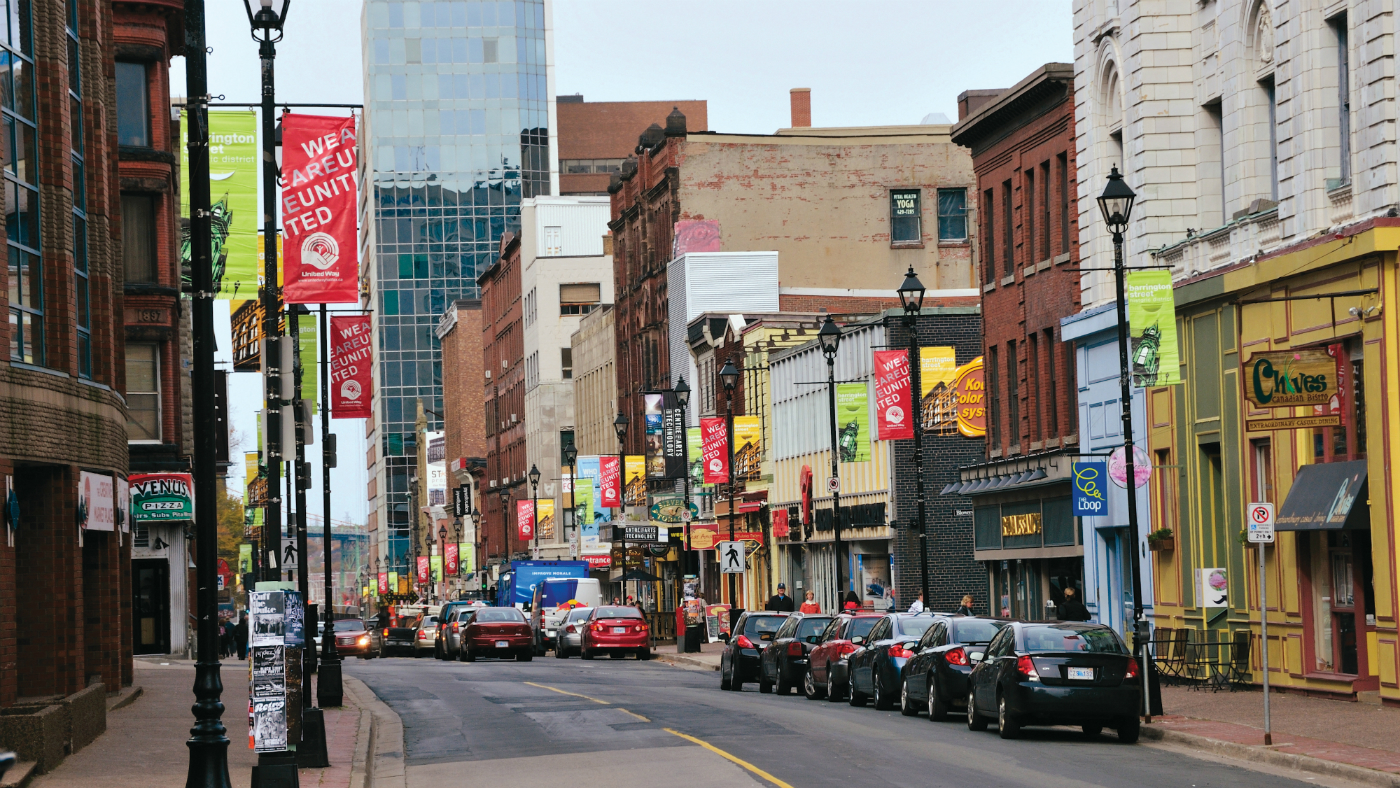
The city also offers an impressive array of cafes and restaurants. We enjoyed a blowout meal at the Waterfront Warehouse, where we gobbled down a gut-busting selection of fishcakes, oysters and other aquatic delicacies, along with the food for which Maritime Canada is famed - lobster.
After splashing out upwards of £20 for meagrely-stuffed lobster rolls in London, I was taken aback not only by the affordability (and sheer size) of the lobster in Halifax, but also by its ubiquity; making cameo appearances in pasta dishes, burgers and even side dips.
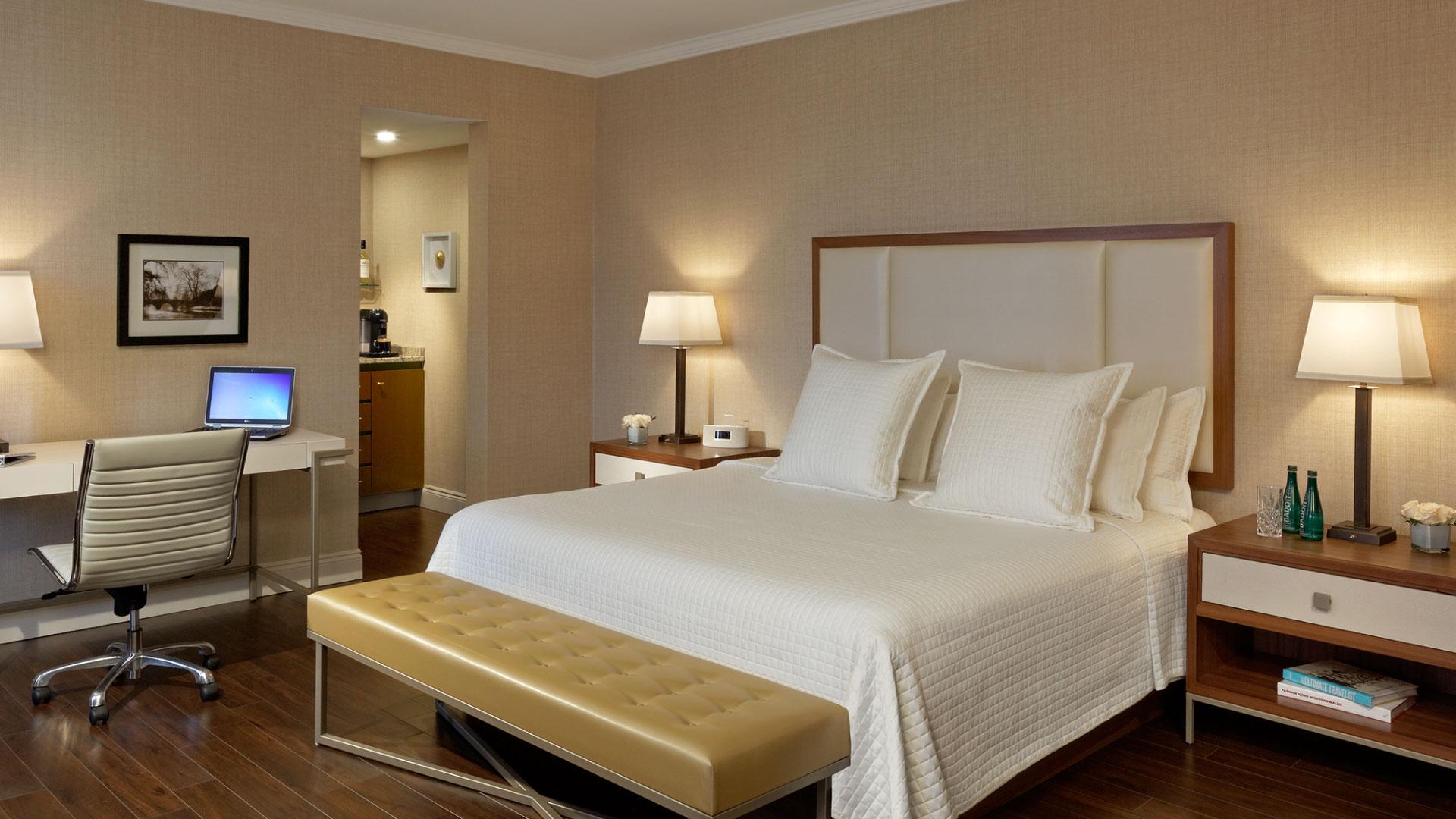
After feasting on a mountain of butter-smothered lobster, we rolled out and checked into The Lord Nelson Hotel & Suites, a red-brick behemoth towering over Halifax Public Gardens that has been a city landmark since opening in 1928.
Peggy’s Cove
The next morning saw us piling into a seven-seater car to explore more of Nova Scotia. After departing Halifax, we ducked and weaved over hillocks and troughs along Route 333, sailing past vast lakes, cosy cottages and roadside pumpkin stands. Despite being the second-smallest province in Canada, a shoreline dented by fjords and coves has afforded Nova Scotia a staggering 4,500 miles of coast, and its unusual shape means you are never more than 42 miles from the ocean.
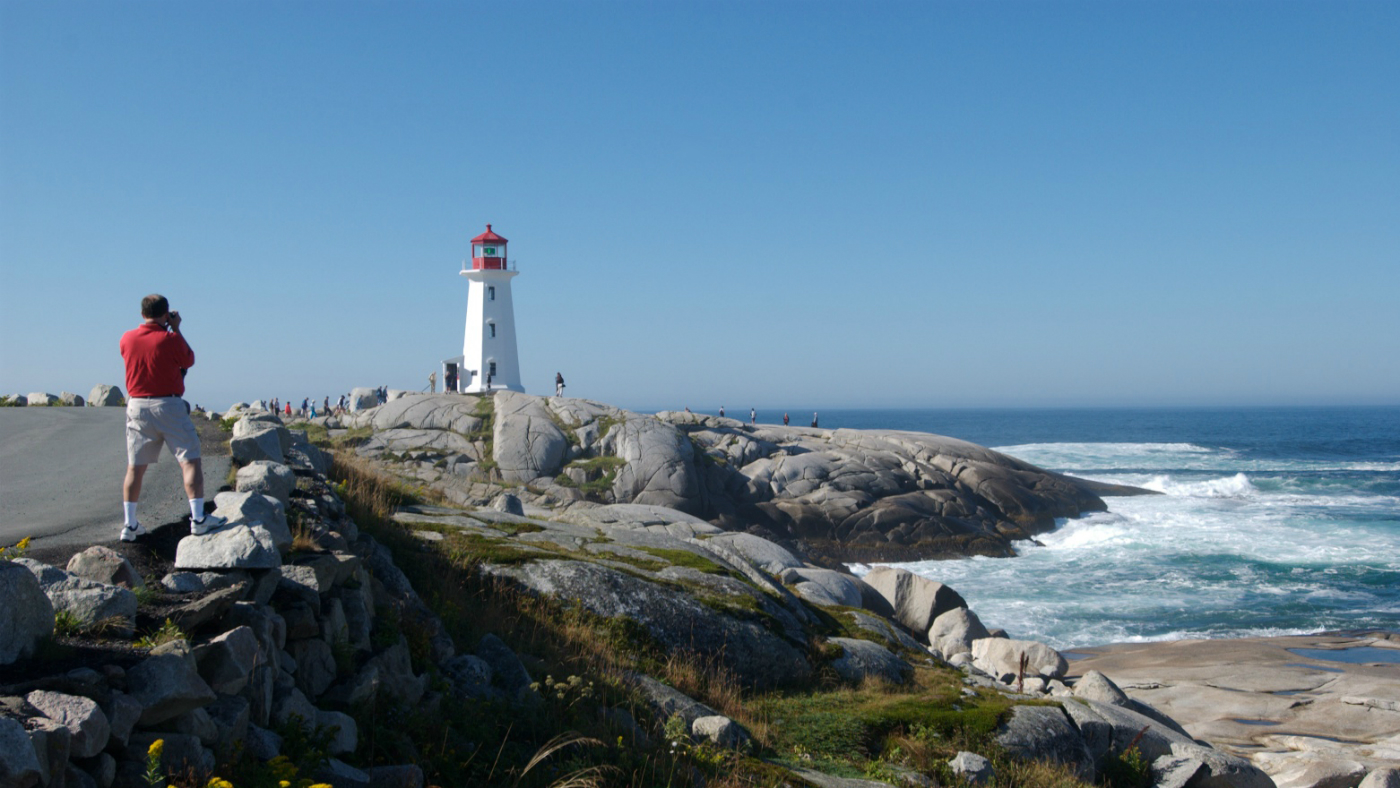
The peninsula is home to around 160 lighthouses, the most famous of which would be our first stop. One of the most iconic sights in all of North America, chances are that you’ve seen images of Peggy’s Cove Lighthouse, which stands atop an outcrop of smooth grey stone jutting out from the mainland. Here, the senses are overwhelmed by all things nautical: the gentle sea breeze carries the sound of chattering visitors and the tunes of a Scottish bagpiper and an old lady playing sea shanties on an accordion.
Peggy’s Cove refers also to a seaside community of multicoloured fishing huts and lobster shacks encircling the bay from which the name derives. We had a short pit-stop snack on the fittingly named Lobster Lane, where, a little unnervingly, we were encouraged to hand-pick the creatures that would go into our lobster rolls.
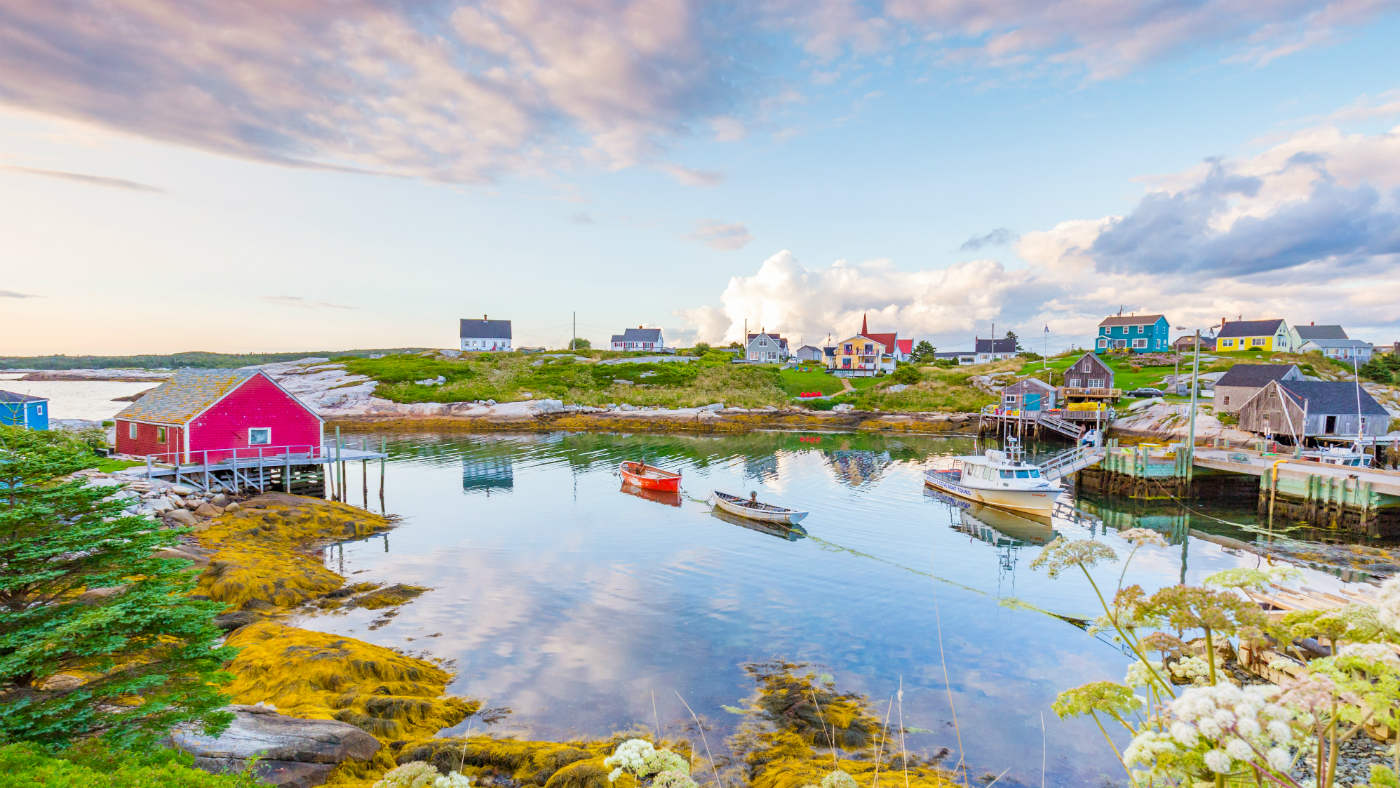
Mahone Bay and Lunenburg
An hour’s drive from Peggy’s Cove sits the hamlet of Mahone Bay, where we stopped at The Biscuit Eater, a tearoom-style cafe in a leafy sidestreet, to sample another of eastern Canada’s most popular dishes.
In the Maritimes, the humble biscuit is a far cry from anything we’d give such a name back in the UK - more like an unsweetened scone, it can be served with anything from stir-fried vegetables to seafood chowder, while my decision to pair it with a BBQ beef brisket and red cabbage slaw proved to be a good one.
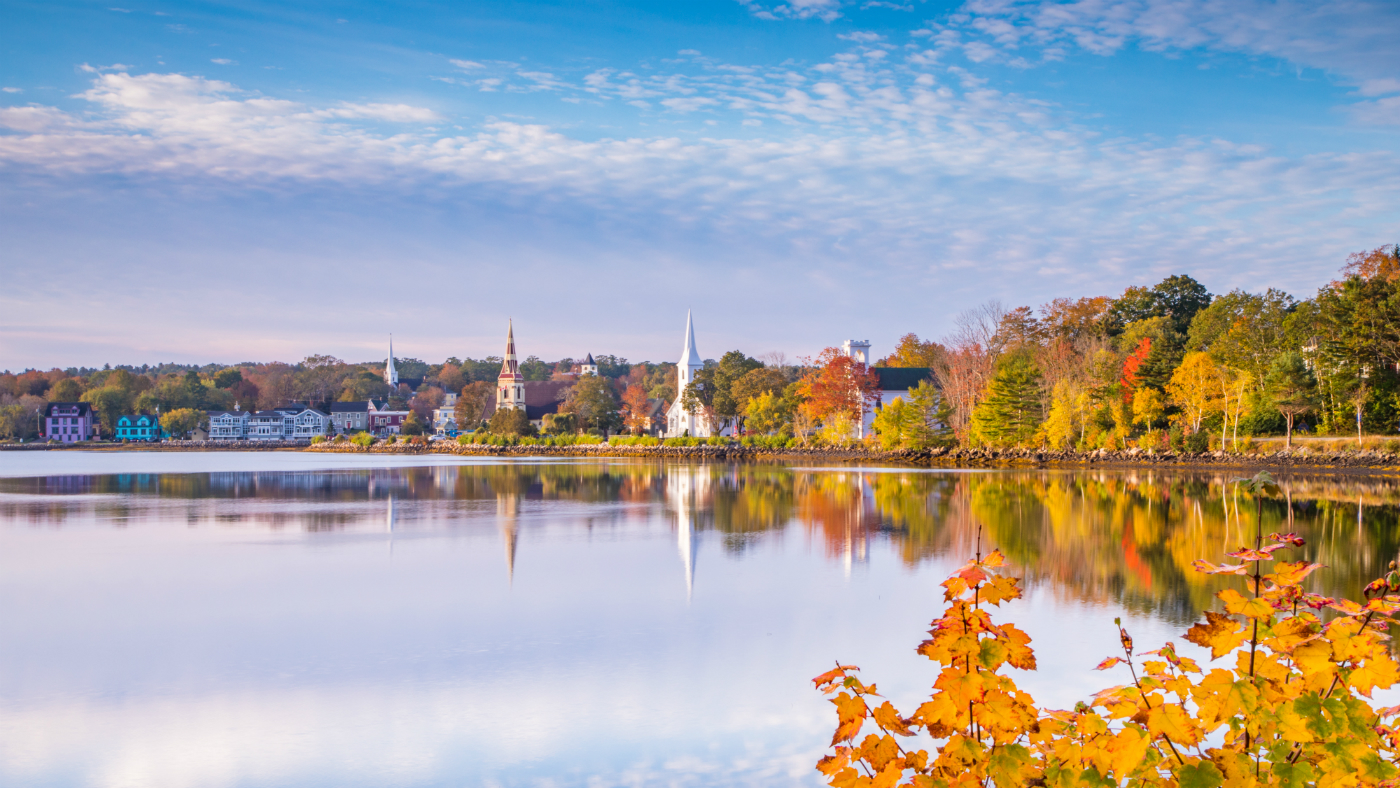
Our biscuity feasts provided ample fuel for a stroll along the coastal road south from Mahone Bay, past shops selling trinkets, knitwear and souvenirs, before we drove on to the historic town of Lunenburg for the second hotel stay of our trip.
With the sun reflecting off the bows of sailboats in the harbour, our first glimpse of Lunenburg was a sight to behold. Dotted with colourful houses, the colonial-era port is set against a backdrop of green hills and pine forests.
It is a town brimming with life, where gorgeous-yet-austere wooden churches are juxtaposed against sleek microdistilleries. Its charms have not gone unnoticed either. In 1995, Lunenburg found its way onto the Unesco World Heritage Site list, which cites the town as “the best surviving example of a planned British colonial settlement in North America”.

We holed up at the Lunenburg Arms, which offers rooms with stunning views over the waterfront, before heading up to the Lunenburg Academy Foundation - one of many local buildings said to be haunted - to begin a tour of the Old Town with Ashlee Feener, co-founder of Lunenburg Walking Tours.
With plenty of laughs, spooky tales and an endless stream of fascinating anecdotes, this was one of the highlights of our stay in Lunenburg. The tour ended at the waterfront, where we snuck into Ironworks Distillery for a few tasters of their delicious rum, vodka and brandy as a sharpener for another glorious lobster dinner at the Old Fish Factory.
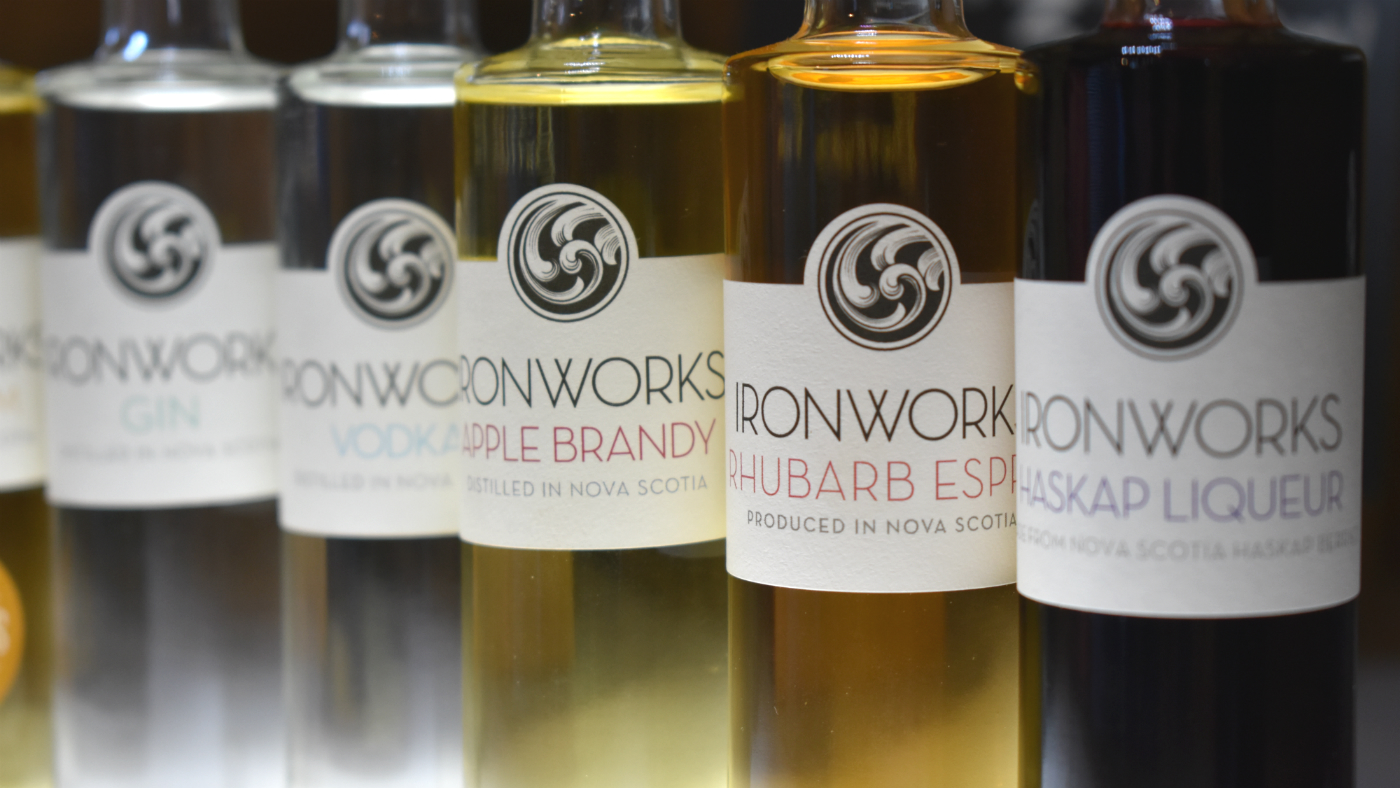
Kejimkujik National Park and Digby
There are few better incentives for an early-morning start followed by a one-hour drive than the promise of a wine-tasting session. Hence, we found ourselves wandering bleary-eyed through rows of grapevines at Luckett Vineyard in Gaspereau Valley. Established in 2010, the vineyard is home to a bar framed by ultra-modern metallic walls, a luxurious outdoor seating area and, of course, fantastic wine. If you ever get the chance, check out their signature red The Old Bill, a hearty mix of dried Cabernet Foch, Castel, Lucie Kuhlmann and Precoce.

Still buzzing from our much-appreciated stopover at Luckett, we drove on to Kejimkujik National Park, a vast national park in the centre of Nova Scotia that is famed for the petroglyphs left behind by generations of the Mi'kmaq First Nations people, who have inhabited the region for 4,000 years.
Here, notions of Maritime Canada as ground zero for European migration into North America are quickly overturned. Aided by conservation programmes and the Canadian government, the park has retained many traces of the history that came before the French and British settlers, with evidence of hunting, fishing and prehistoric craftsmanship dotted all about, along with rock carvings depicting everything from boats and animals to ceremonial hats.
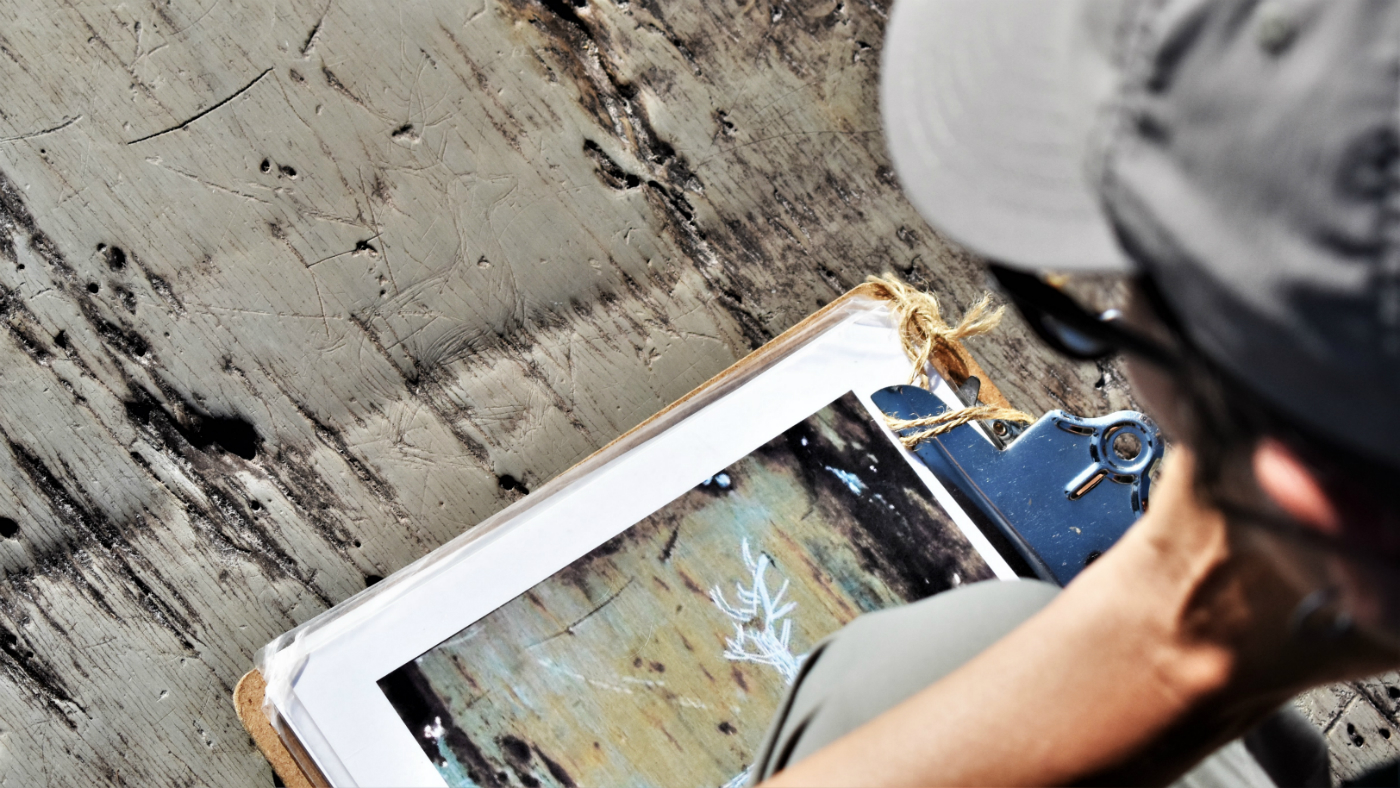
Our last night in Nova Scotia was at the nearby Digby Pines Golf Resort & Spa, where we slept in wooden cabins after tucking into a hefty helping of succulent Digby scallops served with Yukon Gold hash browns at the on-site Churchill’s Restaurant & Lounge. The evening ended on yet another high note, with my first taster of Nova Scotia’s Glen Breton Rare Eight-Year-Old Whisky, a rich but smooth nod to old Scotland that went down a treat.
New Brunswick
Saint Andrews
The following day and with heavy hearts we waved goodbye to Nova Scotia and set sail on the Fundy Rose ferry to its sister province of New Brunswick, where we made straight for the town of Saint Andrews just two miles from the US border.
Sitting snugly in the innermost point of the island-pocked Passamaquoddy Bay, Saint Andrews was the most touristic of the stops on our trip, with a pristine high street and a wealth of bars, restaurants and leisure activities. The town is also home to one of the finest hotels in the region, the historic Algonquin Resort, where we stayed during our time here. Built in Tudor Revival style, the 233-room resort was first opened in 1889 and is now a luxurious hub for whale watching and kayak tours from Saint Andrews Harbour.
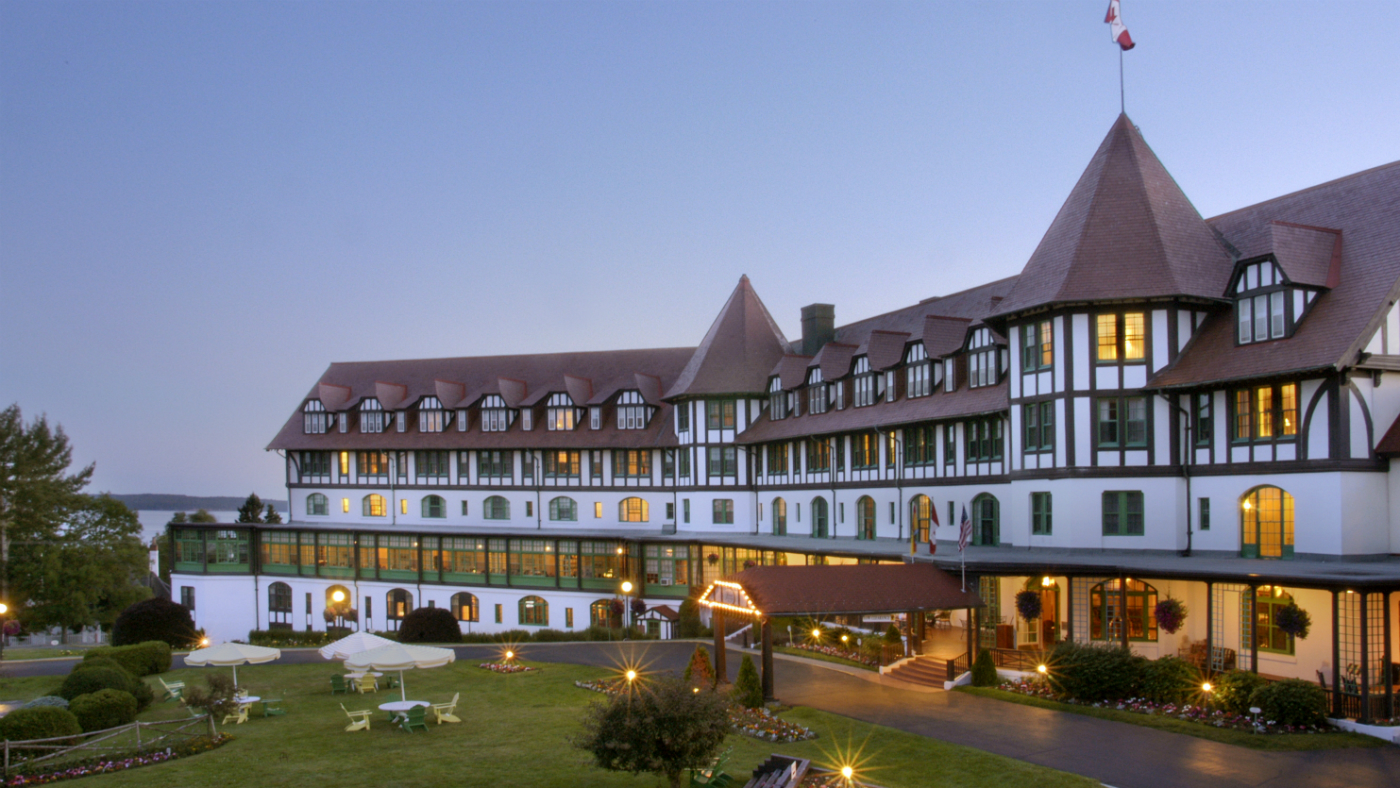
On our first day, we steadied our sea legs and got ready for an epic whale-watching adventure by donning comically large wetsuits.
After hopping aboard a boat that twisted and turned at astonishing speed through the archipelago that protects Saint Andrews from the open Atlantic, we arrived windswept and salt-sprayed off the coast of Campobello Island. Here, we were greeted by the sight of two enormous humpback whales named Flip and Flop, who came close enough to our vessel to spray us with water from their blowholes.
Their playful antics remained the topic of discussion as we later headed back for another night of scallops and lobster at the Algonquin’s Braxton’s restaurant, before hitting the water again the following day for a tour of the bay in tandem kayaks. This saw us padding around the nearby uninhabited Navy Island, with seals poking up their heads to disrupt the mirror-like surface of the water as we rowed past.

For our final excursion in Saint Andrews, we headed inland for an afternoon of foraging for food in the hills around the Rossmount Inn, run by chef Chris Aerni. The restaurant’s “naked lobster” dish has attracted international attention, and when I sampled it that evening it was clear why. Poached out of its shell, the tender lobster meat, served on a bed of gnocchi and green vegetables, was the finest I’ve ever eaten.
Saint John and Hopewell Rocks
As the sun rose on our final day in Canada, we headed east on the long drive to New Brunswick’s second-largest city, Saint John. The scenery on this side of the Bay of Fundy is rather different to that of Nova Scotia, which seems almost Scandinavian at times. By contrast, New Brunswick feels thoroughly Canadian - wide multilane highways roll over undulating hills, with vistas of lush green pine forests up to the horizon.
Saint John - referred to as “#SaintAwesome” by its own tourist board - is the oldest city in all of Canada, founded by royal charter in 1785. Although much of its original architecture has been replaced by a behemoth of a port - one of Canada’s largest - the downtown area still exudes old-time charm.
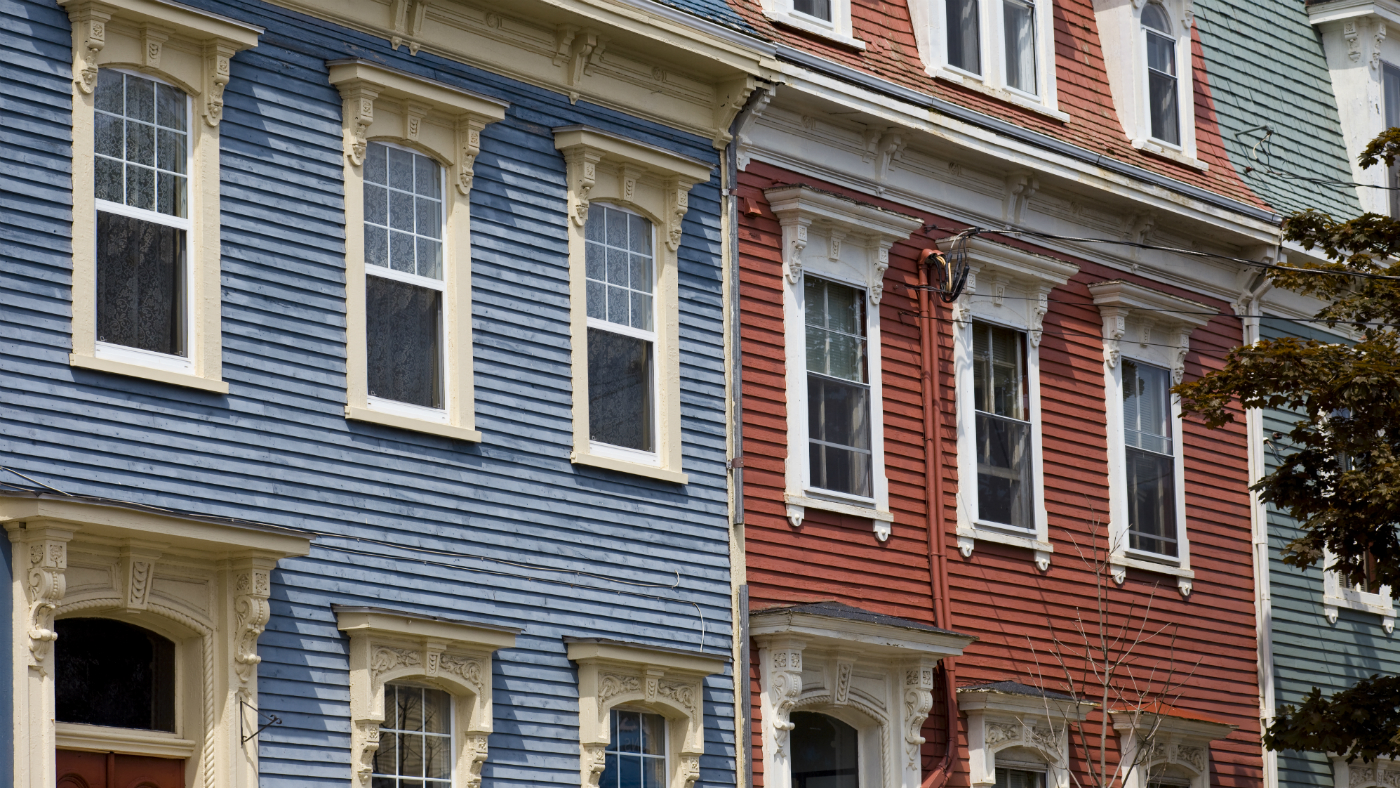
Along with shipping and commerce, the city has become renowned for its gastronomic attractions, the epicentre of which is the Saint John City Market, the oldest continuously operated market of its type on the continent.
Sheltered by a rustic wooden ceiling and crammed with stalls, this is no overpriced hipster market à la Borough or Spitalfields. The vendors here still sell the basics - an array of ultra-fresh vegetables, crusty breads and fine cuts of meat, all at refreshingly affordable prices.
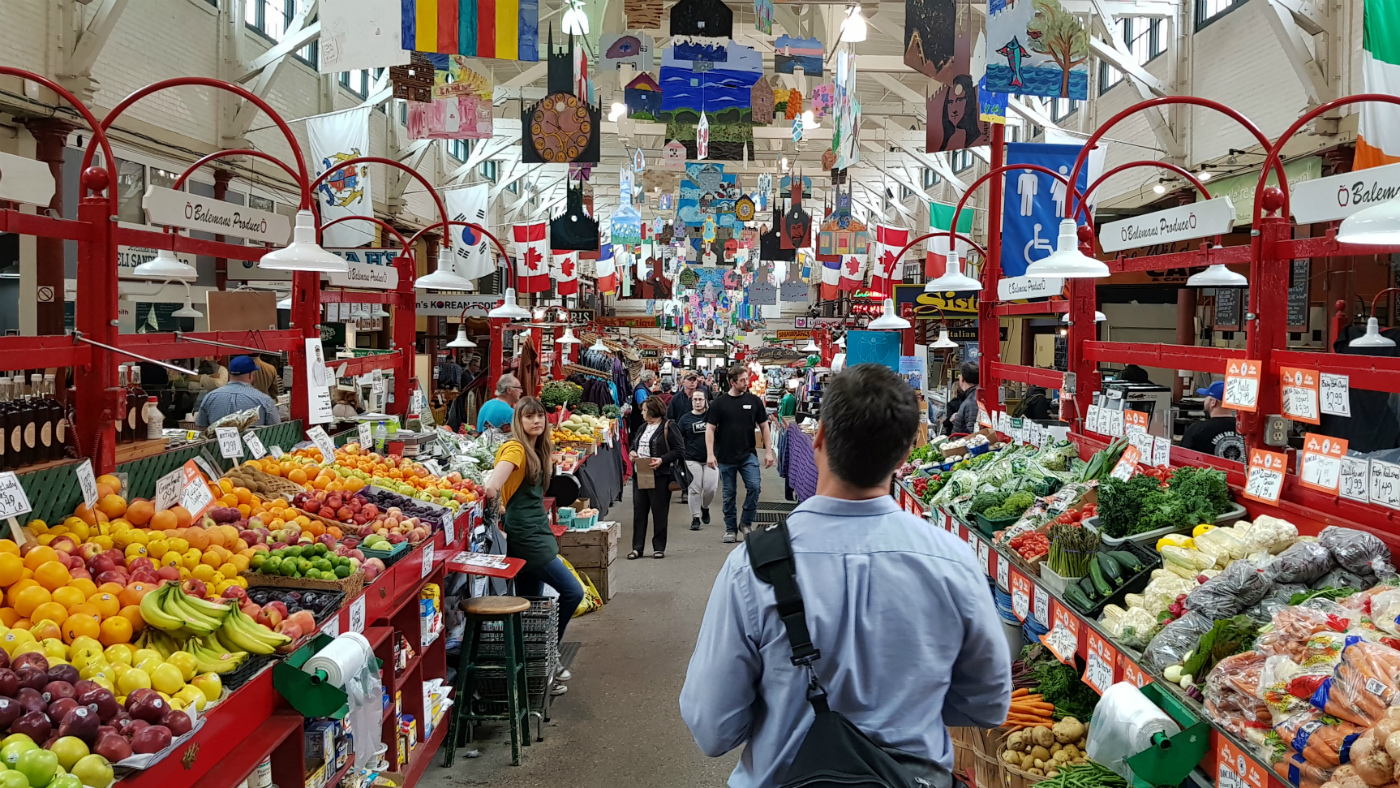
Should you be lucky enough to shop there, head to mini-eatery Slocum & Ferris to sample some dulse, one of Maritime Canada’s most iconic (and strangest) delicacies. A sun-dried form of the palmaria palmata seaweed, dulse is chewy, salty and “oceanic” on the tongue, and can be served as everything from a snack food to a bacon substitute in Slocum & Ferris’ toasted DLT (dulse, lettuce and tomato) sandwich.
Our final stop before heading back to Halifax for our flight home to London was the Hopewell Rocks, which I had been told was one of the most wondrous geological phenomena in all of Canada, if not the world. It did not disappoint.
Without doubt the highlight of my trip across the Maritimes, the Hopewell Rocks are a stunning demonstration of the raw power of the ocean, where the highest recorded tides on the planet have carved huge chunks out of the colossal towers of rock along the rugged coastline. Our appreciation of this natural wonder was heightened by our guide, Kevin Snair, a New Brunswick native with an unwavering passion for this incredible natural rock formation.
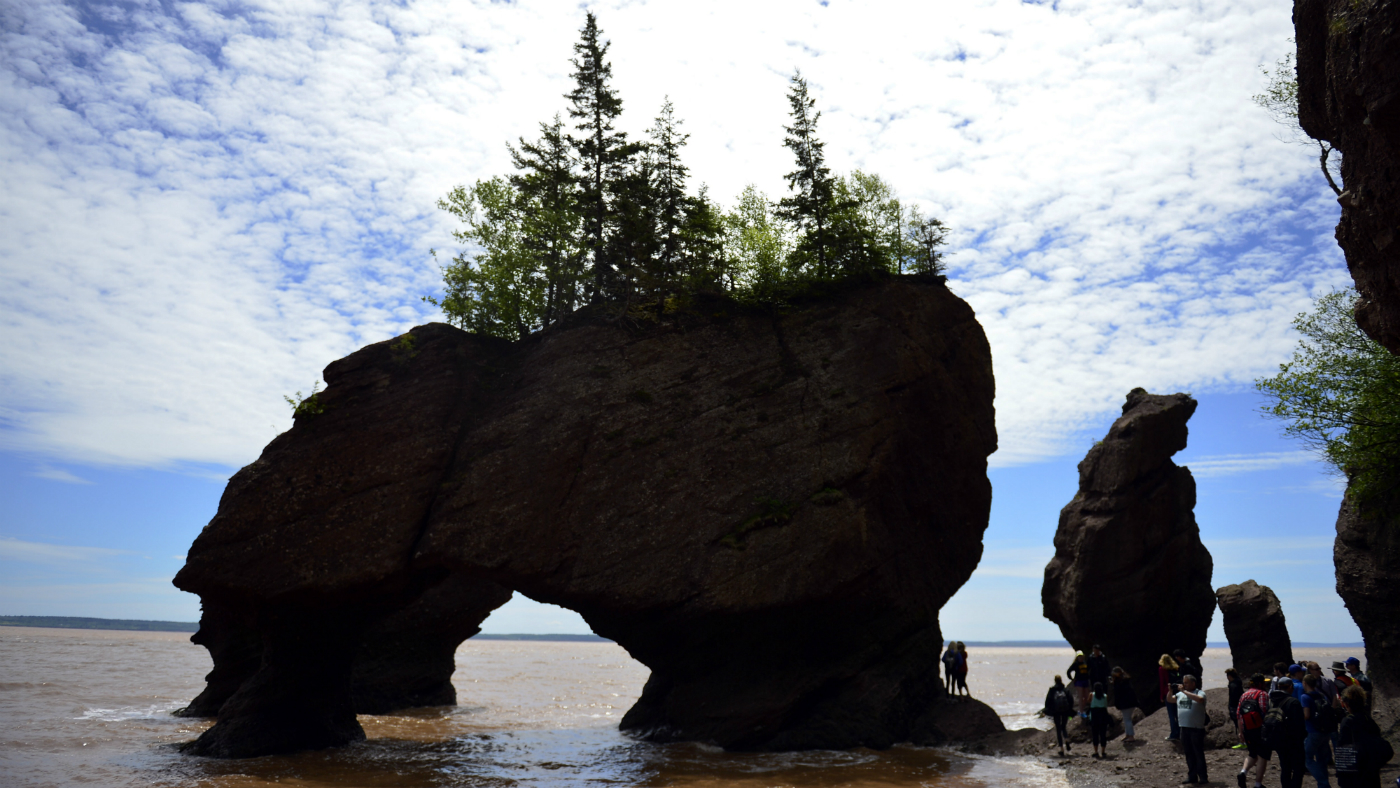
As we walked along the beach, strolling in and out of the shadows that stripe the exposed seabed from the rocks above, Kevin informed us that the tides here vary by as much as 46ft - making it the highest tide in the world.
With the water creeping ever closer to our feet and the sun starting to set, we decided it was time to retreat and prepare to depart Canada.
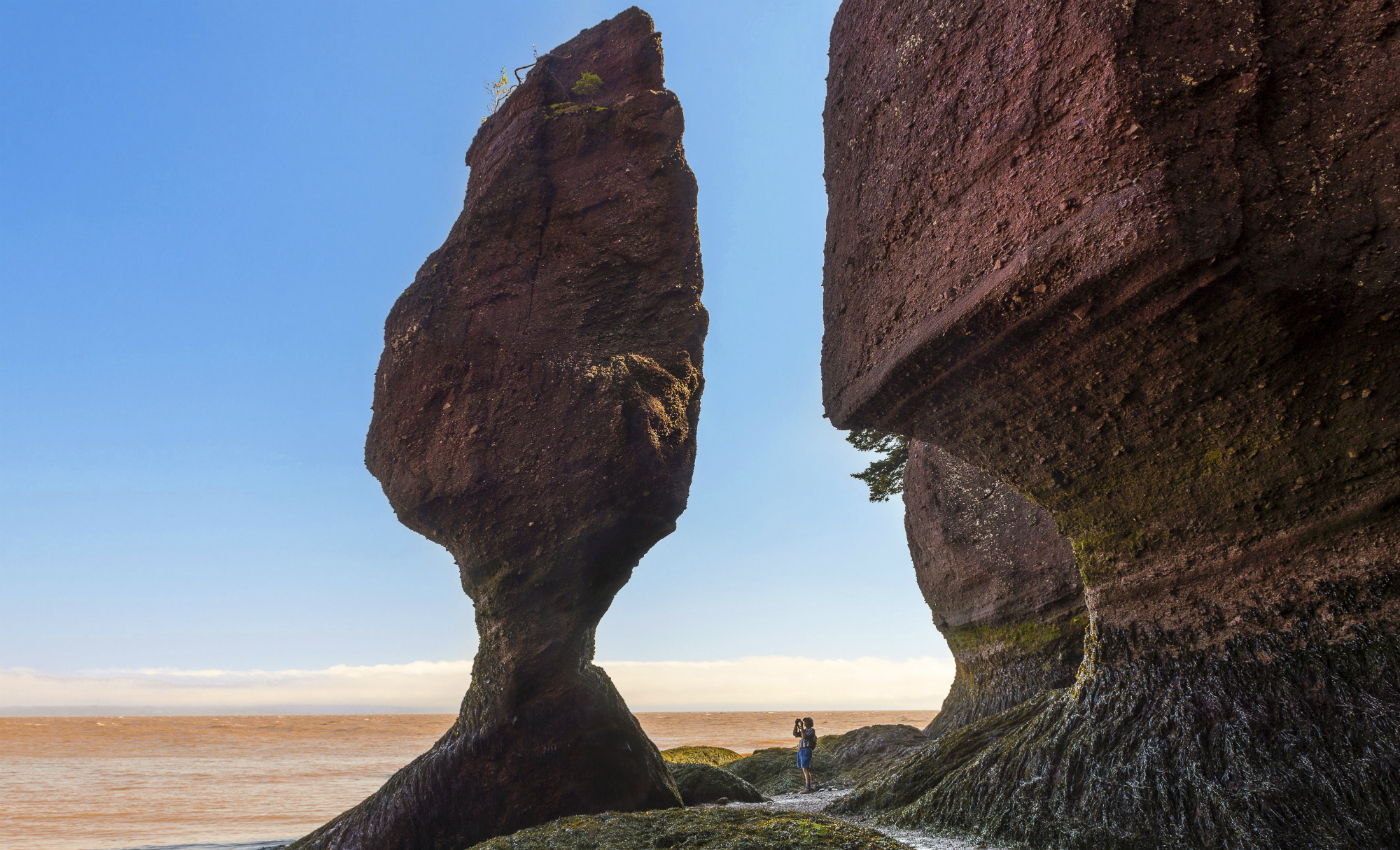
As I packed my bags, I pondered all that I had discovered in this region of extremes. The Maritimes feel like a nerve centre of Canadian culture both old and new, blissfully unspoiled by tourism and development.
And as far as I’m concerned, as long as these beautiful provinces cling to the edge of North America, the Whistler ski-trips and Montreal city breaks can wait.

Hayes & Jarvis (01293 762 456, Hayesandjarvis.co.uk) has a ten-night holiday to Atlantic Canada from £2,159 per person, with three nights at The Lord Nelson Hotel & Suites, two nights at Lunenburg Arms, two nights at the Digby Pines Golf & Spa Resort and three nights at The Algonquin Resort, all on a room only basis. The price also includes car hire and return international flights from London Heathrow with Air Canada. Based on departures 31 July 2019.
For more information about the region, see NovaScotia.com and tourismnewbrunswick.ca.
-
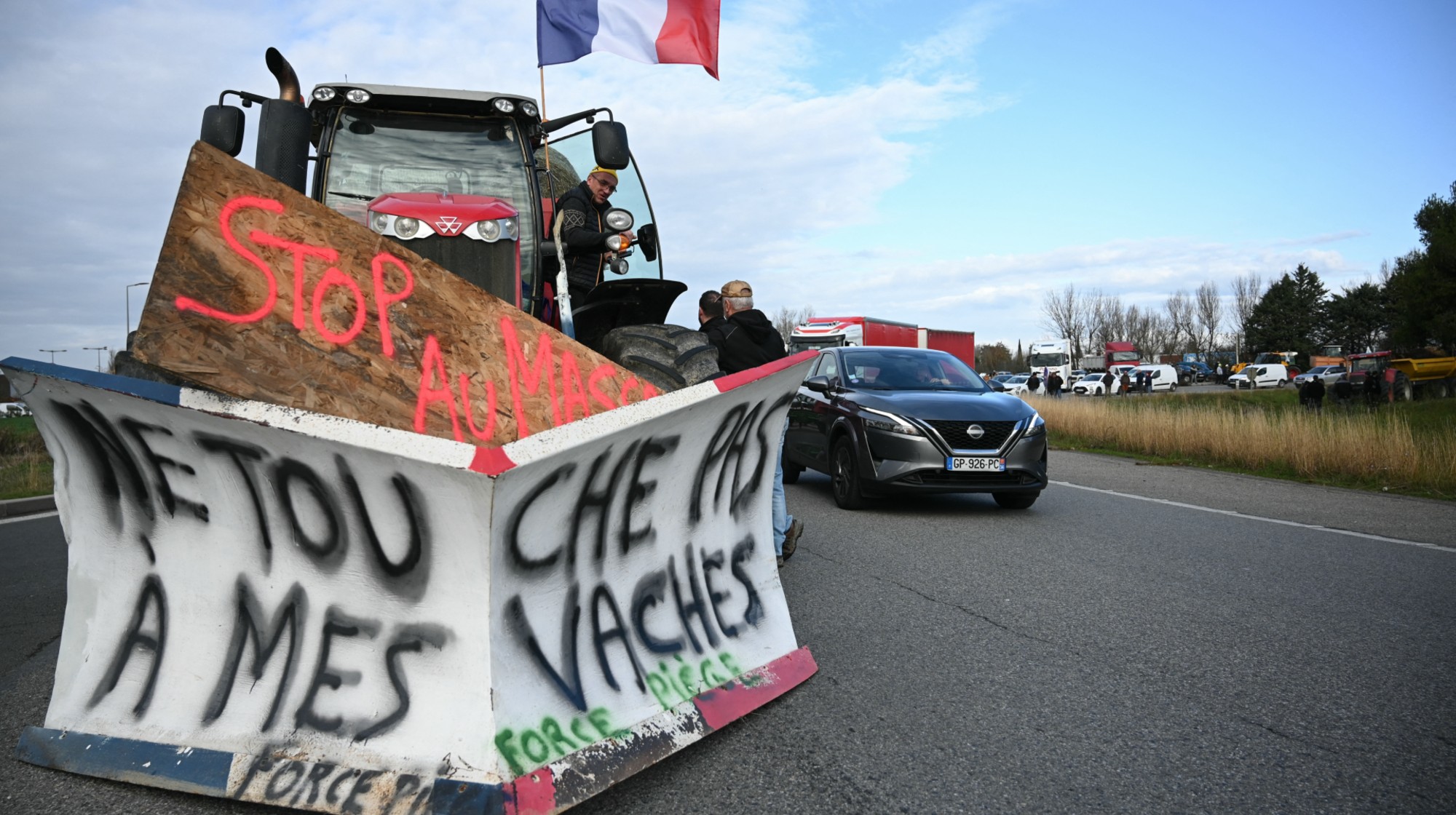 ‘Lumpy skin’ protests intensify across France as farmers fight cull
‘Lumpy skin’ protests intensify across France as farmers fight cullIN THE SPOTLIGHT A bovine outbreak coupled with ongoing governmental frustrations is causing major problems for French civil society
-
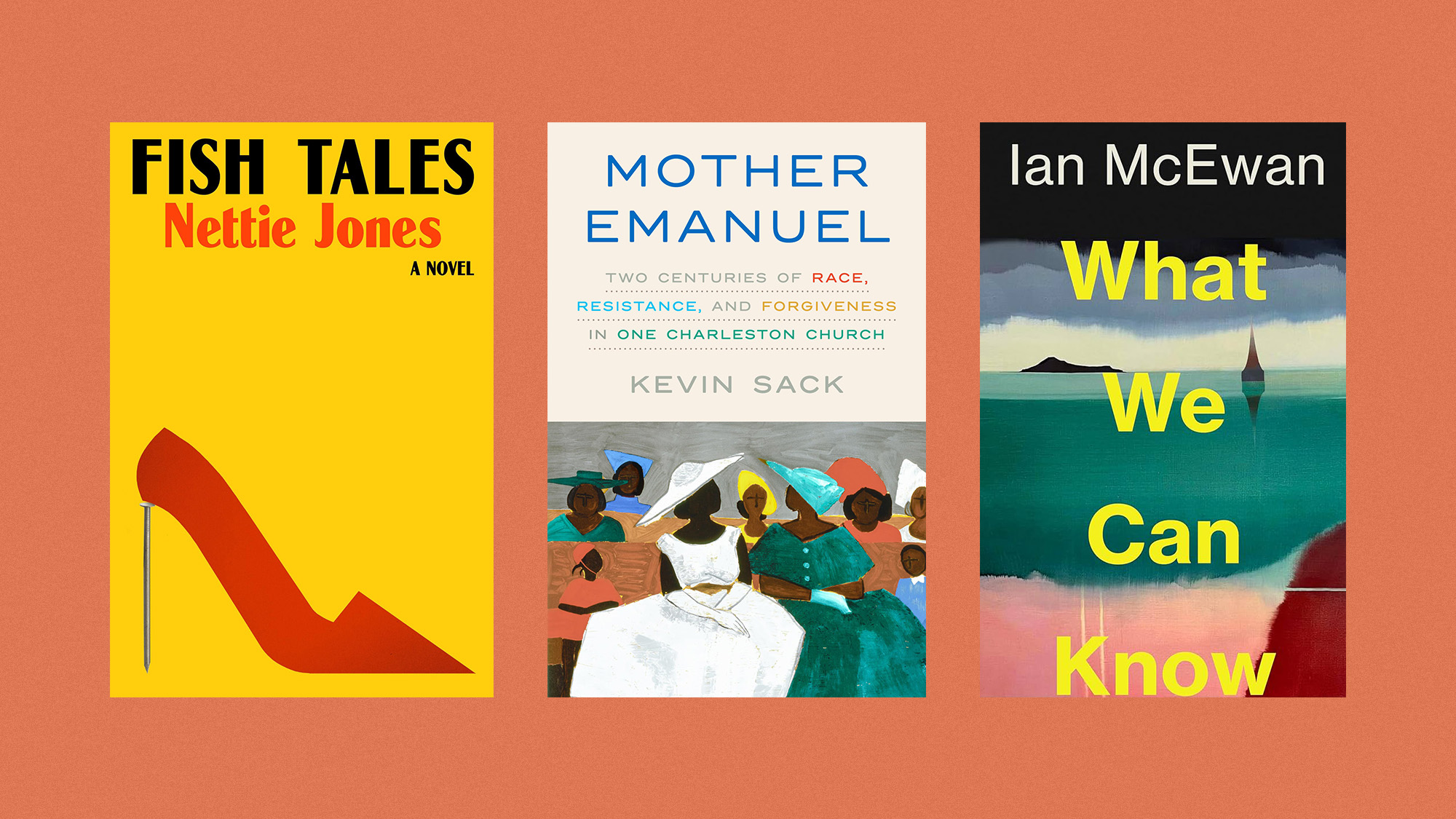 The best books of 2025
The best books of 2025The Week Recommends A deep dive into the site of a mass shooting, a new release from the author of ‘Atonement’ and more
-
 Inside Minnesota’s extensive fraud schemes
Inside Minnesota’s extensive fraud schemesThe Explainer The fraud allegedly goes back to the Covid-19 pandemic
-
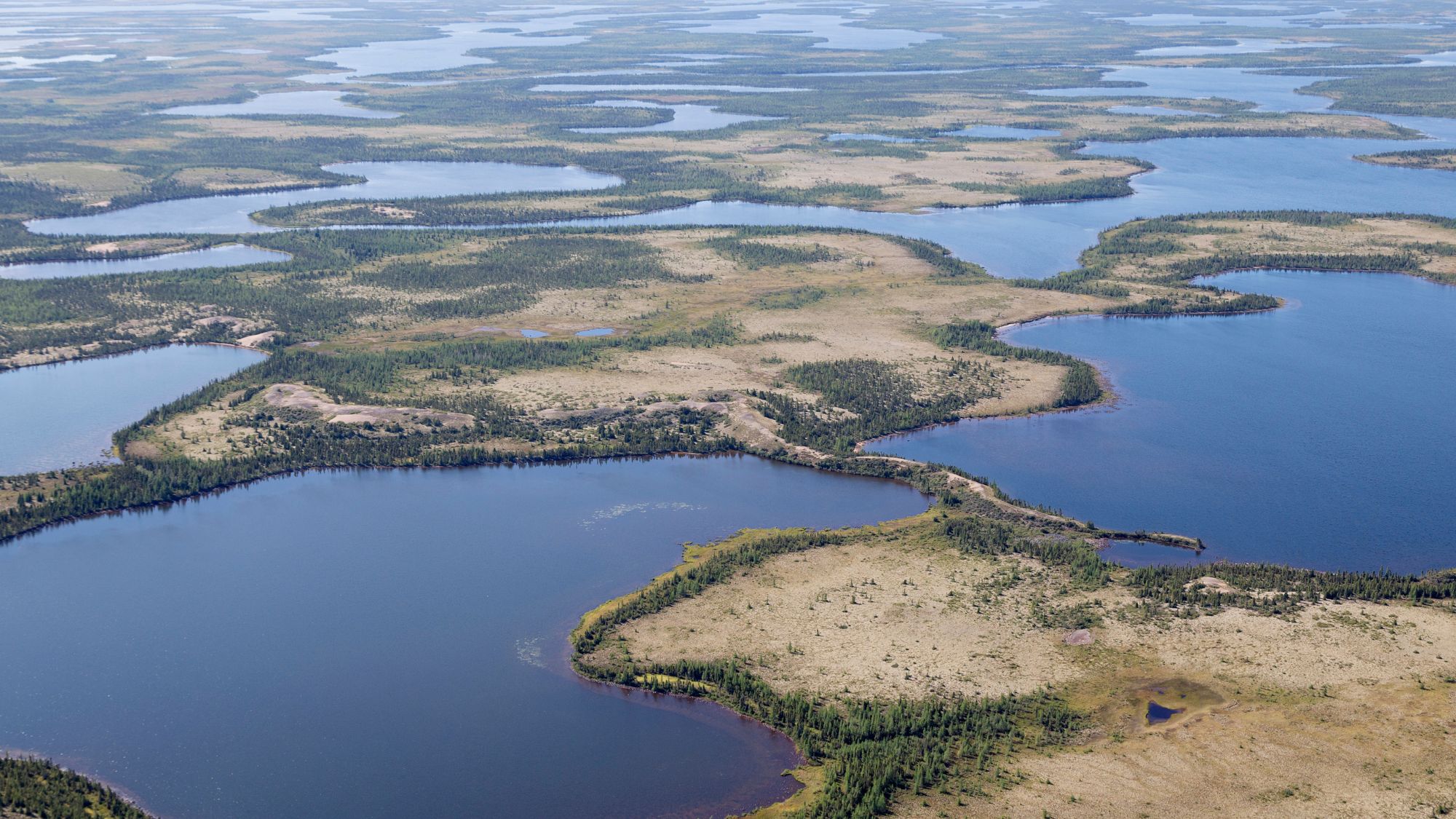 Heavenly spectacle in the wilds of Canada
Heavenly spectacle in the wilds of CanadaThe Week Recommends ‘Mind-bending’ outpost for spotting animals – and the northern lights
-
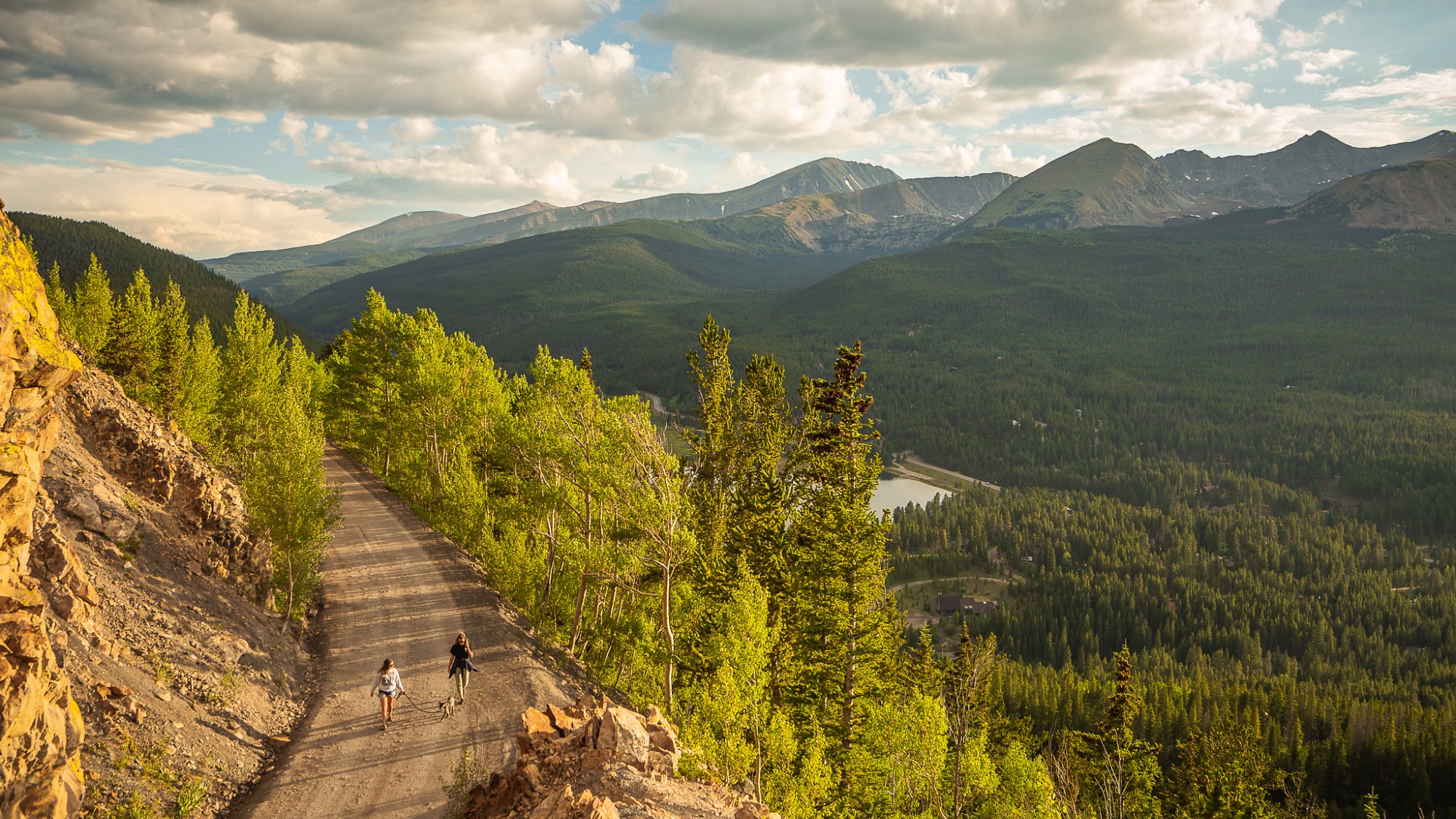 Snow what? 6 charming ski towns to visit during peak summer.
Snow what? 6 charming ski towns to visit during peak summer.The Week Recommends No powder, no problem
-
 See the bright lights from these 7 big-city hotels
See the bright lights from these 7 big-city hotelsThe Week Recommends Immerse yourself in culture, history and nightlife
-
 7 nightlife destinations that are positively electric
7 nightlife destinations that are positively electricThe Week Recommends Accra, Seoul, Berlin: These are a few of the cities that come alive after dark
-
 The Canadian: taking a sleeper train across Canada
The Canadian: taking a sleeper train across CanadaThe Week Recommends Unique and unforgettable way to see this 'vast and varied' landscape
-
 In search of British Columbia's spirit bears
In search of British Columbia's spirit bearsThe Week Recommends Canada's Pacific coast harbours a myriad of 'wondrous creatures'
-
 8 eagerly awaited hotels opening in 2025
8 eagerly awaited hotels opening in 2025The Week Recommends A new year means several anticipated hotel openings are on the horizon
-
 The Sticky: a 'beautifully unhinged' crime caper
The Sticky: a 'beautifully unhinged' crime caperThe Week Recommends Bingeworthy Amazon Prime series puts 'Fargo-like spin' on the tale of Canada's real-life maple-syrup heist